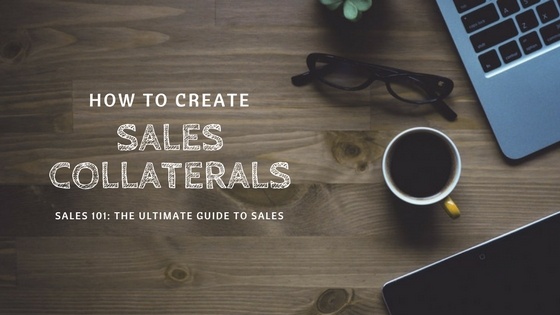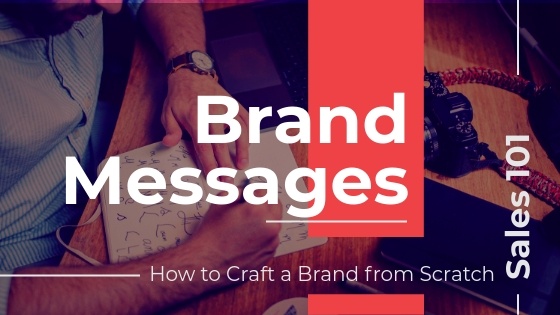A sales collateral is a document that helps communicate the value of an offering to potential customers. Collaterals aim at communicating distilled information to prospects whenever it’s needed. The job of creating a sales collateral goes to the marketing department but its impact is perceived at every stage of the buying cycle. These documents help in visualizing the company’s value proposition and entices prospects to move further in the sales cycle.
Get the your free eBook - The Ultimate Guide to Sales - and enjoy lessons for all the stages of a sales process in one go.
Common Sales Collateral You’ll Use:

1. Corporate Brochure:
A corporate brochure is a promotional material that summarizes the working of a company or any of its specific offering. With improvements in digital communication, websites have successfully replaced brochure. The only place where they come in handy are situations where the prospect hasn’t visited your website for example in trade shows.
2. Company Deck:
A company deck is a presentation on the work of the entire company. It is a generalized document which briefly describes all the offerings of a company. It is used to give an overview of company’s services, products, clientele, and history. It is used to introduce prospects to the company. It is especially handy for introductory emails when prospects haven’t clarified their need.
3. Product/Service Presentations:
These are presentation specific to a product or service. These are usually customized based on individual clients and explain a particular product in detail. Product presentations are the most used collateral in a sales process as they describe the product in depth to the prospect and influence him to purchase.
4. Case Studies:
Case studies are success stories of a company on how its products or services have successfully solved problems of companies. They build credibility for a company and help gain the trust of prospects. For creating great case studies companies usually document work for each client and update it on a regular basis.
5. Post Service Collaterals:
These include product help docs, onboarding guides, service documents etc. The objective of this content is to retain current customers. This makes it easy for companies to make current users feel important and satisfied. There don’t really form part of selling but are very important for customer success.
How to Make Collaterals and Promotion Materials Stand-out:
Here are some tips to help you get the best from your collaterals:
1. Keep users on top:
I have seen countless collaterals which are all about a company bragging about its work. While achievements make you credible there is no reason to overload prospects with information. Make every collateral about the final user.
2. Focus on design:
Your design keeps the reader hooked throughout the document so make sure you bring the best of design skills into creating sales collaterals. The flow of information should be systematic and images and graphs should be used to make information digestible.
3. Keep it short and concise:
Nobody likes to read a thousand page essay just to know that you provide a service. Replace complicated sentences and jargon with simple easy to understand sentences. When it comes to collaterals the length and density should be minimum and only relevant information should be included.
4. Tell stories:
Stories are immensely powerful in connecting with the audience. It is, in fact, easy to convert most of the corporate collaterals like case studies, company history, even product, into stories. A story conveys the emotion which otherwise goes missing in communication. In later chapters, we will discuss stories in further detail.
5. Leverage them throughout the process:
A sales collateral is meant to be used frequently. Don’t try to retain them for only specific emails but make use of them as frequently as it makes sense. From prospecting with a brochure to closing with case studies the use of these docs is an intimate part of the sales process.
6. Use data to build credibility:
Which of these sentences do you think is more credible - ‘substantially increased revenue in last quarter’ or ‘increased revenue by 40% in last quarter of 2017’? I guess you chose the second. Data brings trust and tangibility to an otherwise flat information. So, back your statement with data wherever possible.
7. Update frequently:
Make sure that the information you convey is up to date. If your prospects find that the information is outdated then it will not bode well for your sales. Make sure you keep updating the collaterals as when there are changes in market or company.
With these insights, you can make better collaterals for your business. For reference, you can visit our resources section and check out how we make our collaterals. Once you are through with them you can move to the next step of sales - creating a sales trailer.
Get the your free eBook - The Ultimate Guide to Sales - and enjoy lessons for all the stages of a sales process in one go.

5 Simple Rules to Create Addictive Chatbots: You Won’t Know the 6th
While there are thousands of companies using a chatbot only a dozen of them are successful. Creating a bot is easy but creating a successful bot is...

1 min read
Intel will show off more dual-core Android smartphones
Intel showed us it could create a competent mid-range smartphone with decent processing power and battery life to spare, and then the company...





